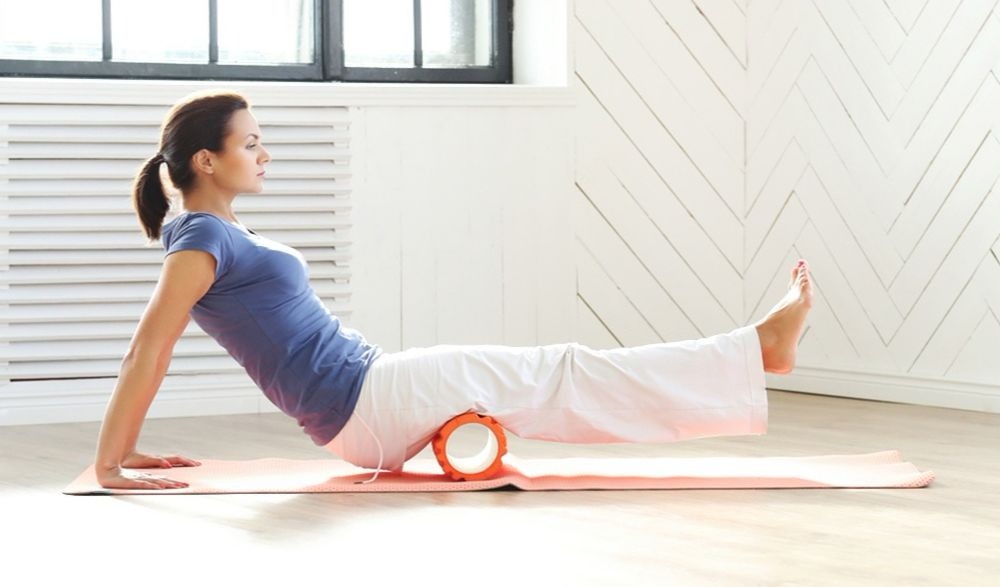Self Massage: Does It Work For Muscle Aches And Pains?
 Contributed by
Dr Gary Tho
December 27, 2017
Contributed by
Dr Gary Tho
December 27, 2017

Foam rollers and trigger point balls are popular fitness toys. But do they work?
Dr. Gary Tho addresses your body’s pain points in his new book The Pain Free Desk Warrior – Free Yourself From Aches And Pains. Here, he shares an excerpt in hopes that you can start living your life free of pain, fatigue, and illness!
They are marketed as aids in faster recovery from training, and able to fix all sorts of muscle aches and pains. There are a variety of brands and types of foam rollers. Some just look like a foam log, while others have lumps and bumps in various patterns. The same goes for trigger point balls.
So do they work? The simple answer is yes.
The long answer is they are great for muscle tightness and other muscle injuries – but if your aches and pains aren’t 100 percent a muscle problem, you only get a temporary fix, not the real fix. Foam rollers and trigger point balls are great for self-myofascial and trigger point release, which simply mean they help you in massaging away tight muscles and knots by yourself. It’s a free deep-tissue massage in the comfort of your own home, any time you want.
Be warned, though: Deep-tissue massage means it’s likely to hurt. However, with the right techniques and supervision, you’ll not only be able to control the precise location of the muscle release, you’ll also be able to control the pressure.
Of course, proper posture and technique are essential. You will maximise the benefits, and more importantly, not cause injury to other parts of your body, especially the shoulder joint and rotator cuff muscles, which are used when rolling.
One very common mistake is that people take the name “foam rollers” literally. You don’t actually roll on the foam roller. Don’t roll too fast. It might feel like a nice massage when you roll back and forth on a foam roller quickly, but you’re not actually getting much out of it. You need to hold the pressure on a specific spot and wait until you can relax your muscles. So roll slowly, so that your muscles have time to adapt and relax despite the compression. Find those tender spots and use short, slow rolls over that spot.
The other common mistake is spending too much time on one spot. Seasoned foam roller users often get used to the pressure and find themselves trying to put all their body weight on one spot, working it for 5 or 10 minutes. Prolonged pressure and compression of one spot is not good for the muscles and may damage tissues including nerves.
Also, note that you should never roll directly over a joint or bone. Less is more. Spend 30 to 45 seconds on each tender spot and move on. Let your body relax onto each spot and control the pressure using the right techniques. If you are unsure, you should ask a trained healthcare or fitness professional.
There are many ways to use these self-massage tools for the whole body. Simple instructions are usually packaged with the product. Here are three foam roller exercises to help alleviate neck, shoulder and back pains while undoing the sitting posture.
1. Neck, Shoulder, Upper Back Pain
Lie on your back with knees bent, feet flat on the floor and the roller horizontally behind your shoulders. Interlace your fingers behind your head and neck and point your elbows to the sky. Lean your upper back into the roller by raising your hips off the floor. Roll from the bottom of your ribs to the base of your neck. You can also rotate the torso to roll the muscles around the shoulder blade and sides.
Remember to engage your abs and glutes (buttock muscles) for stability and to prevent injury.
2. Lower Back, Pelvis, and Hip Pain
Sit on the foam roller with knees bent, feet flat on the floor, and your hands on the floor behind you. Cross your right leg over your left knee (forming a figure 4 with your legs). Lean your body to the right until you find a tight spot in the right hip/glute muscle. Release the muscle and repeat on the left side.
Note: Do not to roll directly on the lower back. Rolling the lower back muscles is counterproductive because your back muscles will contract to protect your spine – and the objective is to relax the muscle in the compression. To release your lower back, it’s best to release the hip muscles.
3. Posture Reset
Lie down lengthwise on the foam roller, making sure your tailbone and head are both supported. Bend your knees to keep a neutral curve in your lower back. Spread your arms to the side, making a “T” shape. Let gravity pull your shoulders and arms down towards the floor. Enjoy the chest stretch and hold for one to two minutes.
This is a great exercise to open the chest muscles. It improves rounded posture caused by lifting weights or working at a computer, resetting posture with good alignment and a chest stretch.
To learn more about being a desk warrior, get a copy of Dr. Gary Tho’s book
‘The Pain-Free Desk Warrior’ by visiting his shop!











Sorry, the comment form is closed at this time.